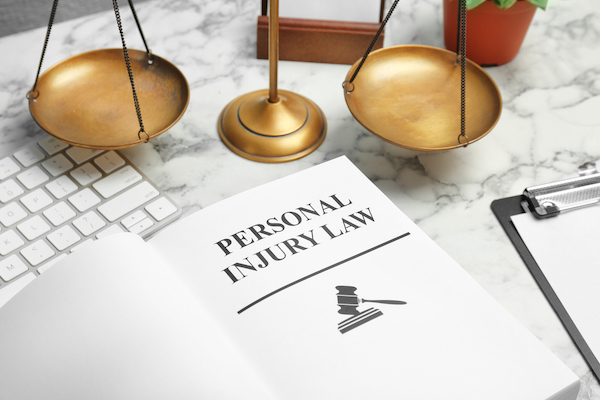A Step-by-Step Tampa Personal Injury Claim Guide

All these scenarios might bring about personal injury claims. You can sometimes collect money through a claim if you feel certain a person or entity harmed you, and they bear some responsibility.
You should know about the crucial steps involved in personal injury claims in Tampa. We’ll run through some of those right now.
Locate a Lawyer
Finding a lawyer must be your first step when getting a personal injury lawsuit going in Tampa. You can always file a personal injury suit without a lawyer if you like, but you need an attorney because they have experience in this area. Unless you know personal injury law very well, you need their assistance during this process.If you know anyone who has gone through a lawsuit before, you might see whether they liked their lawyer. If they liked the attorney or law firm they used, you might use them. If you don’t know anyone who has filed a personal injury lawsuit in the past, then you’ll likely look around online and find the right lawyer or law firm.
Make sure you hire someone who has an excellent industry reputation. You can find some feedback online. You might read the Google Business reviews and see what individuals said who used this lawyer or law firm in the past.
Send a Demand Letter
When you and your lawyer discuss the case and work out a payment structure, you’ll get on the same page. Then, your attorney can craft a demand letter.The defendant in these legal cases means the person or entity you allege harmed you. Maybe that’s a company that made the defective product that made you ill or hurt you. Perhaps it’s the store where you slipped and fell.
However, you are not sending them the letter directly. You are targeting the insurance company that covers the defendant with a liability policy.
The letter says what happened, and it says you are seeking compensation. It might detail the event and the pain and suffering you experienced. It also says how much money you are seeking.
The insurance company from which you’re demanding money must then respond promptly. They’ll say they agree and they’re giving you the cash, or that they don’t agree and they are fighting the charges.
File Your Formal Complaint
If the insurance company that represents the person or entity that you say hurt you won’t pay you, then you’ll file a formal complaint in court. Again, your attorney can craft this complaint. It lays out what happened and officially involves the legal system. Your lawyer wants mediation, and that’s what this complaint starts.The complaint will help the legal system figure out what court jurisdiction gets this case. You must determine that before you can move forward.
The Discovery Process
Next, the discovery process will occur. This means fact-finding. You and your lawyer, and probably some investigators as well, will start gathering evidence. The more you can find, the better your chances.You might collect video evidence of the accident or incident that hurt you if any exists. Maybe you can find some storage camera footage or traffic camera footage. Perhaps someone with a smartphone has video evidence if you’re lucky.
You will locate eyewitnesses if any exist. You’ll get any doctor reports indicating when and how badly you hurt yourself. If you can get any more physical evidence, you’ll do that. Your lawyer might also hire an expert witness who can testify on your behalf if they think that might help you.
The Mediation Process
During the mediation process, you and your lawyer will sit down outside a courtroom with the insurance company representing the defendant. At this point, you both know what the other side has uncovered.The defendant and their insurance company may realize at this point that you have overwhelming evidence that supports your claim. If they see that, they might think they should settle the matter out of court. They’ll likely offer some money, but maybe it’s not the amount you initially sought.
You and your lawyer can huddle and decide whether you should take that cash or not. You might feel you can get more at trial. You can make a counteroffer, or you might just refuse completely and say you’ll work things out at trial.
Taking a settlement offer might give you less money than you originally hoped, but you may feel it’s the best way to resolve things. If you turn down the settlement and go to trial, you might get nothing if the jury doesn’t see things your way.
The Trial Process
If you turned down the settlement offer, or if the insurance company didn’t make one because they think you don’t have evidence proving your claim, you must face off at trial. Your lawyer handles this, though you might take the stand and speak about what the defendant did that hurt you.If you have a convincing case, then a Tampa jury should give you some money. You must prove the defendant hurt you or that they showed negligence. Negligence often comes into play during these trials.
If you win, and you get some money, maybe it’s the amount you first thought, or the jury might give you more if they feel the entity or person who harmed you acted egregiously. You must then pay your lawyer.
The lawyer usually gets about 30-40% of your winnings. That might seem like a lot, but consider everything they did for you.
You can’t win your case without a skilled Tampa-based lawyer. Remember that when you’re seeking someone out who can support you during this difficult time.
Do You Need An Attorney?
If so, post a short summary of your legal needs to our site and let attorneys submit applications to fulfill those needs. No time wasted, no hassle, no confusion, no cost.

